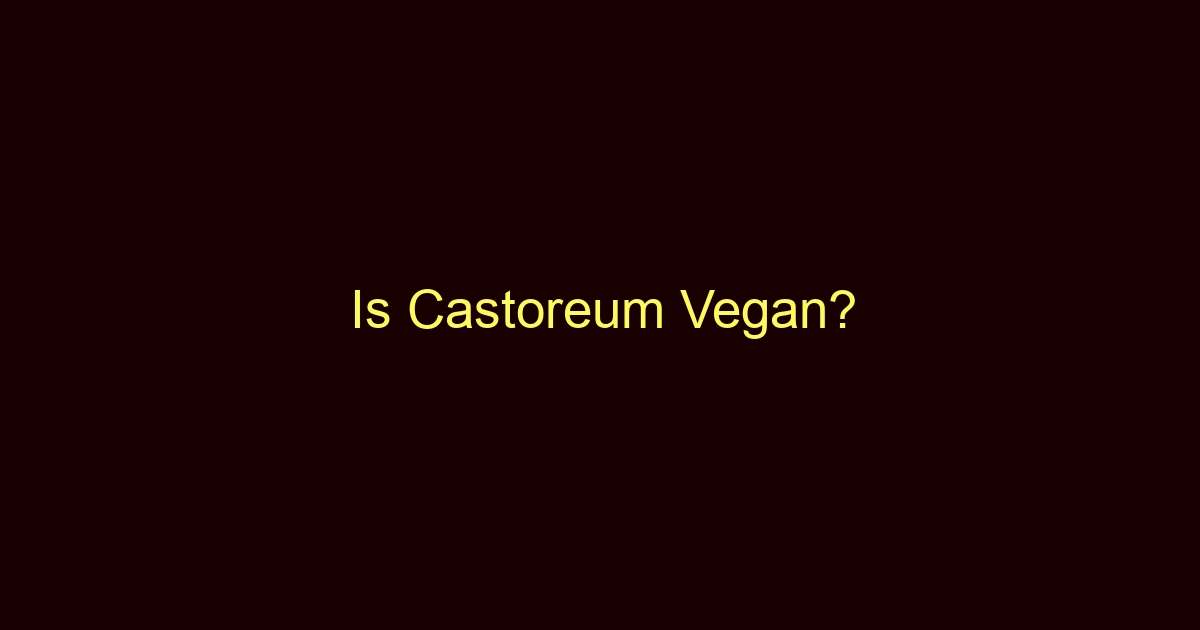Castoreum is an ingredient that has fascinated and repelled consumers in equal measures due to its unusual source and its various applications. Its vegan status is often questioned due to its animal origin. Let’s delve deeper into the mysteries of castoreum.
What is Castoreum?
Castoreum is a substance derived from the castor sacs of mature beavers. These sacs are located in the vicinity of the beaver’s anal glands. An interesting fact is that beavers use castoreum in combination with their urine to scent mark their territory. The substance has a pungent, musky aroma and has been used in various industries due to its distinctive scent and flavor profile.
In fact, castoreum has a rich history. From being used by early settlers in North America for medicinal purposes, to being used in food and fragrance industries today, this beaver-derived substance has been an object of interest for many centuries. While it’s certainly an unusual ingredient, it has a distinct profile that’s difficult to replicate.
What is Castoreum made of?
Castoreum consists of a cocktail of different compounds that contribute to its unique aroma. The composition can vary depending on the beaver’s diet but often includes compounds like phenols and ketones. The mixture of these compounds results in a musky, woody odor, often described as smelling like leather.
The substance is gathered from the castor sacs of both male and female beavers. It’s a labor-intensive process that involves either milking the sacs of a live beaver or, more commonly, extracting the sacs from beavers that have been trapped for their fur. Once extracted, the castoreum is aged for two years before it’s used in various applications.
What is Castoreum used for?
Castoreum’s unique scent profile has made it popular in two main industries: the fragrance industry and the food industry. In perfumery, castoreum is used to create leathery, smoky notes. It provides a deep, rich undertone to fragrances and has been used in famous perfumes like Chanel’s Cuir de Russie.
What Food Contains Castoreum?
In the food industry, castoreum is used as a flavoring agent, specifically to create a vanilla, raspberry or strawberry flavor. It’s commonly found in baked goods, gelatins, puddings, soft candies, frozen dairy, and beverages. However, due to its extraction process and the limited availability, it’s not used as widely as artificial flavorings.
Is Castoreum Vegan?
No, castoreum is not vegan. This is due to the fact that it is derived from an animal source. As a rule of thumb, vegans avoid any products that come from animals, whether the animal is harmed in the process or not.
The extraction process of castoreum involves trapping and killing beavers, which further emphasizes its non-vegan status. Even in the rare instances where castoreum is milked from live beavers, the invasive and stressful procedure is seen as unethical and non-vegan.
Can vegans eat foods containing Castoreum and why?
Given that castoreum is derived from animals, and its collection often involves harm to the animals, it is clear that it is not suitable for vegans. Vegans aim to avoid exploitation and cruelty to animals for food, clothing, or any other purpose. Therefore, any food products that contain castoreum are not typically included in a vegan diet.
As a vegan, it’s essential to read labels carefully. Castoreum is sometimes listed as “natural flavoring,” making it harder to identify. However, due to its costly and labor-intensive collection process, it’s relatively rare in food products.
Is Castoreum in Alcohol?
While not a common ingredient, castoreum has been used in the production of certain alcoholic beverages, such as some types of whiskeys and beers, to enhance flavor. This is due to its unique taste profile which can add depth to the beverage’s flavor. However, like food, the inclusion of castoreum in these drinks would render them non-vegan.
Is Castoreum in Perfume?
In the fragrance industry, castoreum is admired for its intense, musky scent. Some popular perfumes have incorporated castoreum to add a deep, leathery note to their fragrance. Just as with food and beverages, the use of castoreum in perfumes makes them non-vegan.
The Use of Castoreum in Medicine
Historically, castoreum has been used in traditional medicine, particularly in the treatment of various ailments such as headaches and fevers. Despite this, the medical community today does not recognize castoreum as a legitimate form of treatment due to a lack of scientific evidence supporting these claims.
Is Castoreum Safe?
From a safety perspective, castoreum is generally recognized as safe by the U.S. Food and Drug Administration. However, it’s important to note that this classification does not take into account ethical or dietary preferences such as veganism.
Final Thoughts
To summarize, while castoreum is a fascinating and unusual substance with a wide range of uses, it is unequivocally not vegan. Its animal origin and the processes involved in its extraction violate the fundamental principles of veganism, which prioritize avoiding harm and exploitation to animals. As such, those following a vegan lifestyle should be mindful of the potential inclusion of castoreum in food, beverages, and perfumes, often listed under the guise of “natural flavoring.”
In a world with increasing attention towards ethical consumption, alternatives to ingredients like castoreum are likely to become more commonplace. With advances in food technology, the future might hold the possibility of enjoying the unique flavors and scents castoreum offers without compromising on ethical beliefs.

